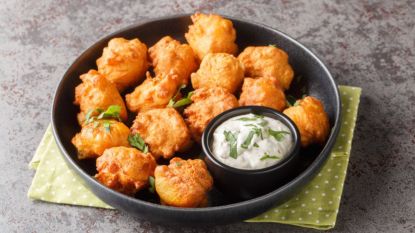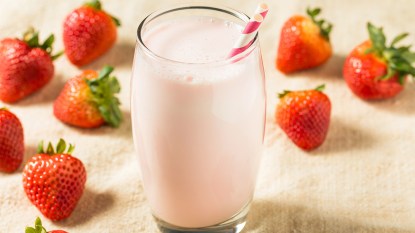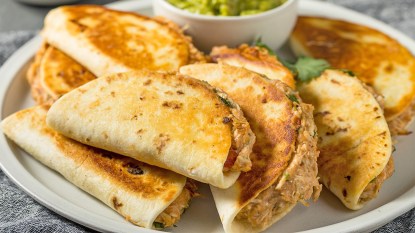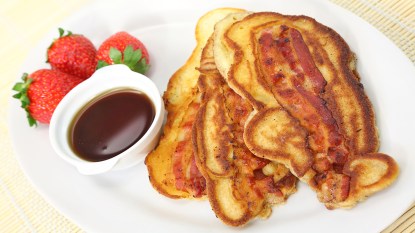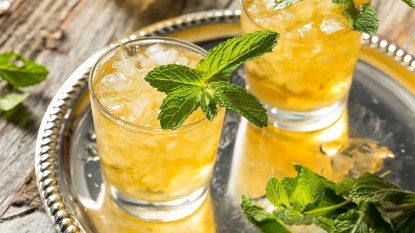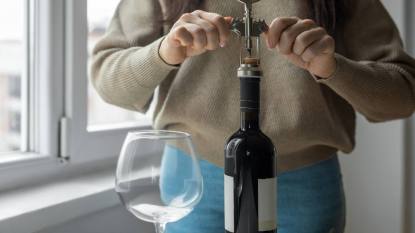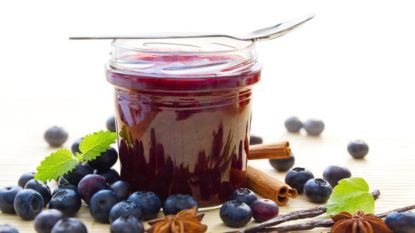Rosé Sangria Is *The* Drink of the Summer — And It’s Deliciously Easy to Make at Home
You'll definitely want to "rosé all day" once you try this refreshing sip!
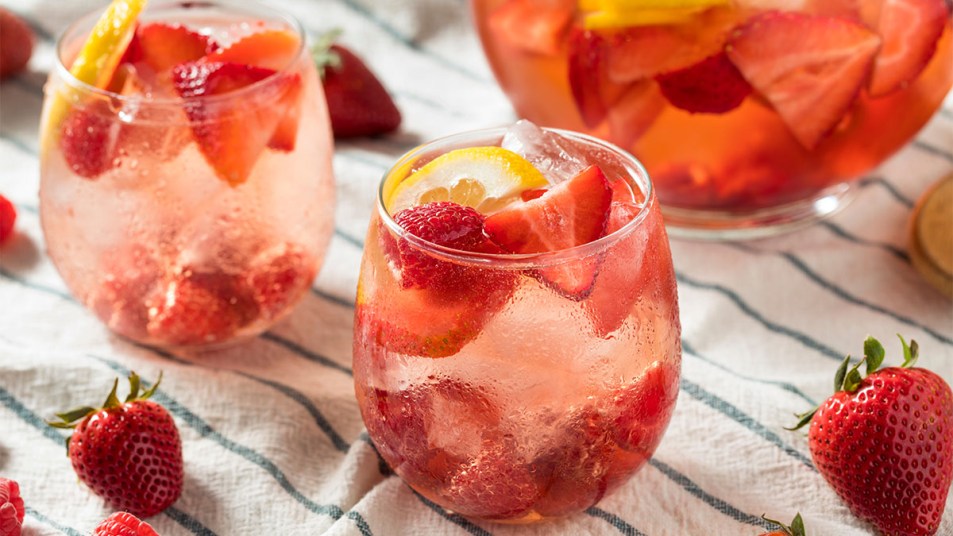
Sangria tastes like summer in a glass, but we’ll admit we enjoy the drink year-round — the sweet, fruity wine drink is just so refreshing no matter the season. Usually we have a hard enough time deciding between sangria made with red or white wine, and now there’s a third delicious option to complicate matters: rosé. Its pretty pink color makes for a gorgeous drink, and it tastes even better than it looks! Can’t wait to try it? Keep reading for all the tips and tricks you need to make the best-ever rosé sangria.
What is sangria?
Sangria is a traditional Spanish drink known for being refreshing and fruity. It typically starts with a base of wine, then you add in a mix of fresh fruits like oranges, lemons, apples and berries. Sweeteners like sugar or honey enhance the taste, while optional spirits such as brandy or liqueurs add even more boozy kick. It’s all served chilled.
(Bonus: Drinking wine in sangria can not only lift your spirits, it’s good for you physically too. Click through to see the health benefits of wine.)
What type of rosé is best for sangria?
When it comes to choosing a rosé for sangria, there is no right or wrong answer — it all depends on your flavor preference. Rosés can be fruity or floral, dry or sweet, with the region and production of the wine making it stand apart. And while you might assume that rosé is simply a mix of red and white wine, that’s not the case. During the early processes of production, rosé gets its light pink color from the skins of red grapes coming into contact with the wine.
Here’s what type of grape to look for on the label to choose the right rosé for your tastes when making sangrias:
If you like it fruity:
You’ll love a bottle of pinot noir rosé, which tends to have hints of watermelon, strawberries and crabapple. Tempranillo rosé is another great option, as it has very prevalent notes of watermelon and raspberry.
If you like it dry:
Tavel rosé is a great option. It tastes very similar to red wine in its tartness but has a pale color that resembles white wine. It also provides a nice nutty flavor. Cabernet Sauvignon rosé is another great variety that has a slight dryness with a deep ruby red hue.
If you like it floral:
Provence rosé is just the thing for you, with its noticeable hints of rosé petal. Another great rosé with notes of violets and rosé petals is Mourvèdre, which has a pale coral color with a full body.
If you like it sweet:
The best variety you can get would be a zinfandel rosé, as this grape has a pungent strawberry flavor, along with hints of lemon, cotton candy and melon. Another option is Syrah rosé, which is rich in flavor with a very full body.
How to make rosé sangria
Ready to try this sweet sip for yourself? Here’s our favorite recipe that we’re sure is going to become your new go-to drink — we like to make it ahead of time, then let it sit so the flavors really soak into the fruit
Rosé Sangria
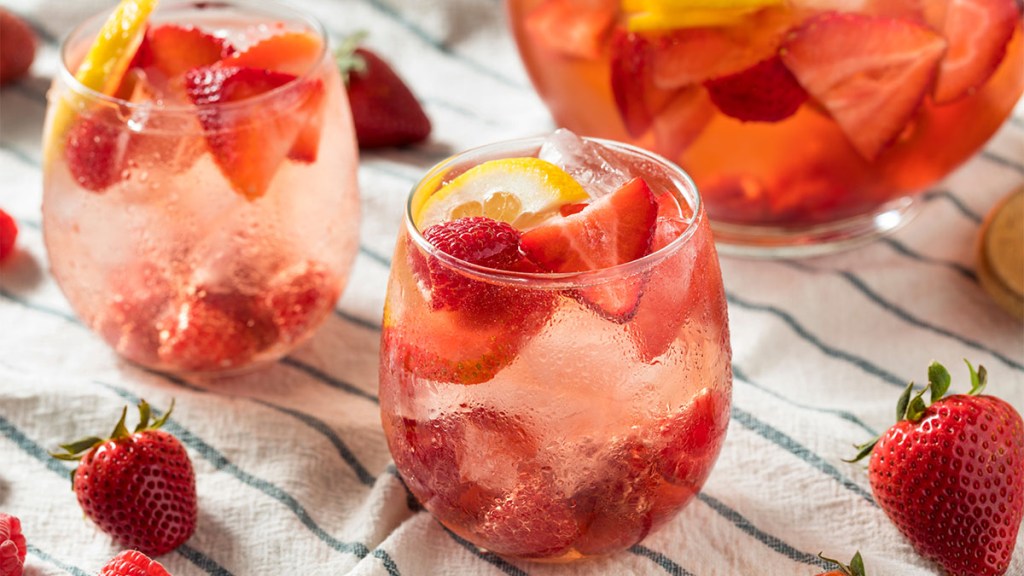
Ingredients:
- 2 oranges, thinly sliced
- 3 lemons, thinly sliced
- 3 cups strawberries, hulled, sliced
- 3 Tbs. sugar
- 1 (750 ml.) btle. rosé wine
- ½ cup brandy
- Sparkling water
Directions:
- In pitcher, combine oranges, lemons, strawberries and sugar; chill 30 min. Add wine and brandy; chill 2-4 hrs.
- When ready to serve, divide among glasses; top each with sparkling water.
Mix it up with fun fruits
Whether you’re using up whatever fresh or frozen fruit you’ve got on hand or seeking out seasonal produce from the market, just about any fruit goes in rosé sangria. The most obvious ones to make your drink look extra pretty are pink fruits, such as strawberries, raspberries, watermelon and even pomegranate seeds. You can also give it bright flavor with citrus such as lemons, limes, grapefruit and oranges, or go for a tropical touch with pineapple and mango. And delicate stone fruit like peaches and plums would give it an elegant twist.
Give rosé sangria a liqueur kick
While you can stick to just wine when making sangria, we like to add in a liqueur to give it a boozy boost and a few extra layers of flavor. While we use brandy in our classic recipe, feel free to experiment: If you’re going for a lemon-y twist, a great option is Limoncello, while Grand Marnier and triple sec are great for adding a tang of orange. If you’re incorporating stone fruits into your sangria, a great add-in is peach schnapps or cherry cordial.
3 more fun ideas for rosé sangria
Experimenting with different types of rosé paired with fruits and liqueurs is all part of the fun. And we’ve got more recipes below to get you started. Prefer to treat just yourself to a glass? Check out this recipe for a single-serving sangria — it starts with red wine, but you can swap in rosé.
1. Strawberry Mint Sangria
Ingredients:
- 3 cups strawberries, hulled, sliced
- ½ cup fresh mint leaves
- ¼ cup sugar
- 2 Tbs. lemon juice
- 2 (750 ml.) btles. rosé wine
- Sparkling water
Directions:
- In pitcher, add strawberries, mint, sugar and lemon juice; muddle. Add rosé; whisk until sugar dissolves. Chill 2 hrs.
- Divide among glasses; top each with sparkling water.
2. Frosé Sangria
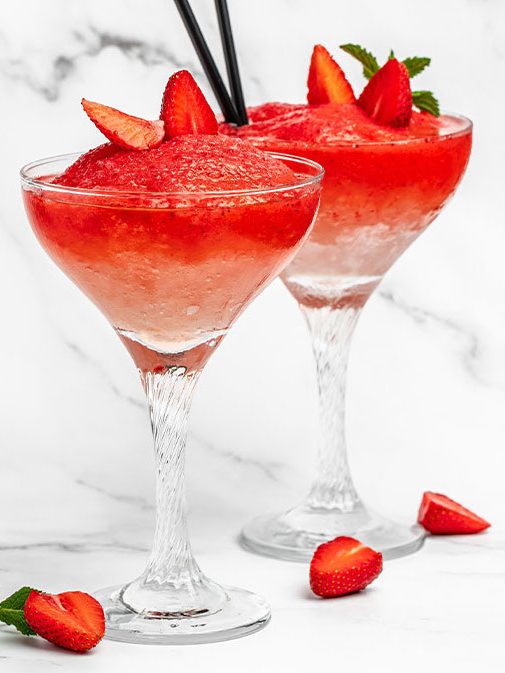
Ingredients (for 2 servings):
- 1 cup rosé wine
- 1 cup ice
- ½ cup frozen strawberries
- ½ cup frozen raspberries
- ¼ cup orange liqueur
- 2 Tbs. orange juice
- 1 Tbs. sugar
Directions:
- In blender, puree all ingredients until smooth.
- Divide among 2 glasses.
3. Cranberry Vodka Sangria
Ingredients:
- 3 limes, thinly sliced
- 3 cups strawberries, hulled, sliced
- 3 Tbs. sugar
- 1 (750 ml.) btle. rosé wine
- ½ cup vodka
- ½ cup cranberry juice
- Sparkling water
Directions:
- In pitcher, combine limes, strawberries and sugar; chill 30 min. Add wine, vodka and cranberry juice; chill 2-4 hrs.
- When ready to serve, divide among glasses; top each with sparkling water.
Want to make another refreshing cocktail? Try this recipe for Pineapple Margaritas!


